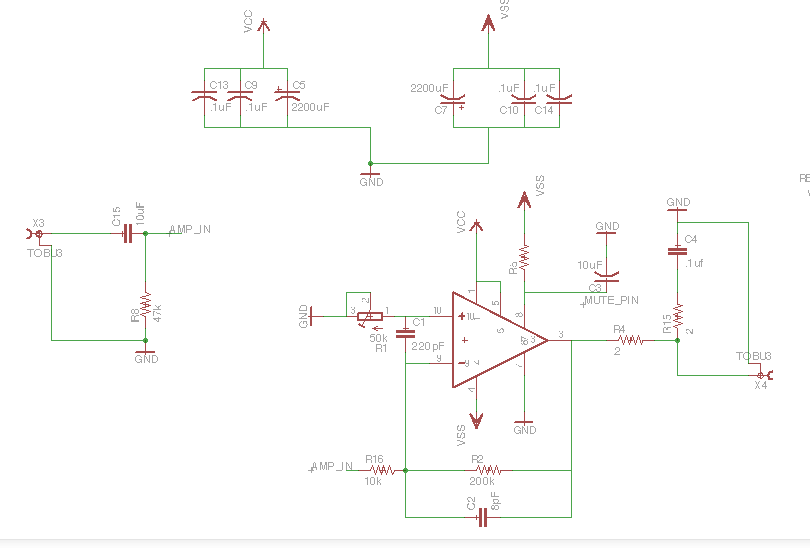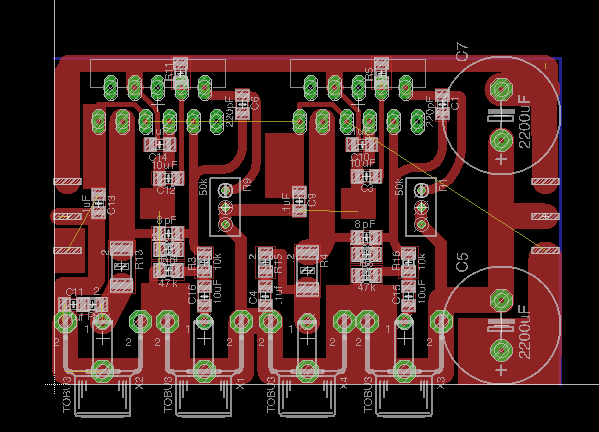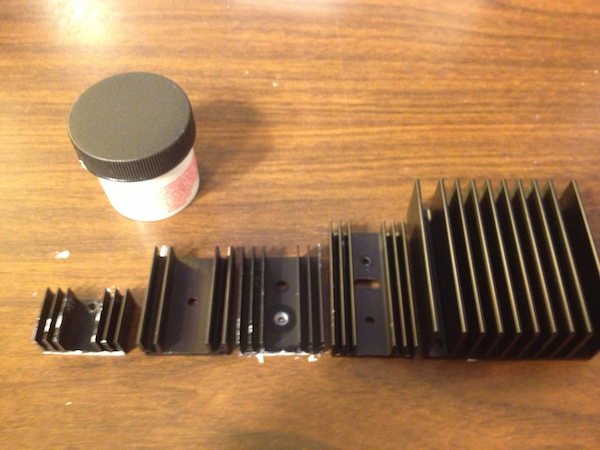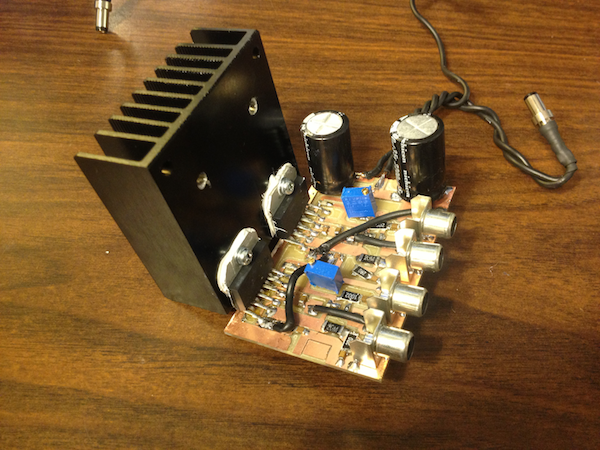The Amplifier Board
The amplifier board is what actually amplifies the audio signal and drives the speaker. By increasing the voltage of the signal, the amount of current passing though the speaker increases, which makes the speaker louder. Technically the same signal from your phone that drives your headphones can drive a larger speaker, but they won't be very loud, which is why an additional amplifier is required. After some research online I found the LM3886, a chip that many DIY audio enthusiasts recommended for building your own amp. I found a schematic online, and designed my amp around that.
This is actually a pretty simple design. The board uses an op amp in an inverting amplifier configuration, with a capacitor to block DC on the input, capacitors to smooth out the power supply, and a small capacitor in parallel with one of the resistors to cancel out any parasitic inductance.
When designing the board layout it's important to keep current carrying traces thick, and signal traces as straight as possible to avoid any parasitic inductance. It also helps to keep sensitive traces as far away from current carrying traces when possible, to avoid inducing noise on that trace. Since my final design was going to use multiple amplifiers, I decided to try to squeeze two into a 2"x3" board.


Shockingly, this design worked the first time. Unfortunately, like any high current component, my amplifiers were heating up. After enough time driving a speaker, they were shutting down because they got too hot.
I bought a number of heat sinks on digikey, as well as thermal paste, which increases thermal conductivity between the components and their heat sinks.

Unfortunately, none of them allowed my amplifier to play at max volume (my phone turned up all the way) for an extended period of time. I finally ordered a larger heatsink, that would cover both chips rather than just one. Since the screw holes didn't line up, I drilled the holes myself such that the screws provided would self tap. Unforunately the chips were still overheating (albiet more slowly), and I'll have to reduce the gain of the amplifier in order to avoid this problem.

Eagle files
This is actually a pretty simple design. The board uses an op amp in an inverting amplifier configuration, with a capacitor to block DC on the input, capacitors to smooth out the power supply, and a small capacitor in parallel with one of the resistors to cancel out any parasitic inductance.
When designing the board layout it's important to keep current carrying traces thick, and signal traces as straight as possible to avoid any parasitic inductance. It also helps to keep sensitive traces as far away from current carrying traces when possible, to avoid inducing noise on that trace. Since my final design was going to use multiple amplifiers, I decided to try to squeeze two into a 2"x3" board.


Shockingly, this design worked the first time. Unfortunately, like any high current component, my amplifiers were heating up. After enough time driving a speaker, they were shutting down because they got too hot.
I bought a number of heat sinks on digikey, as well as thermal paste, which increases thermal conductivity between the components and their heat sinks.

Unfortunately, none of them allowed my amplifier to play at max volume (my phone turned up all the way) for an extended period of time. I finally ordered a larger heatsink, that would cover both chips rather than just one. Since the screw holes didn't line up, I drilled the holes myself such that the screws provided would self tap. Unforunately the chips were still overheating (albiet more slowly), and I'll have to reduce the gain of the amplifier in order to avoid this problem.

Eagle files